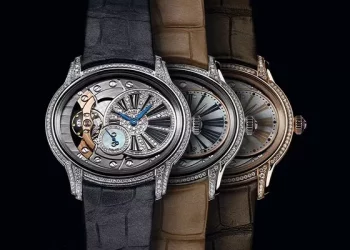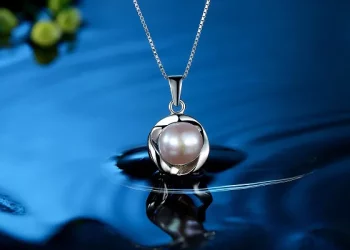Introduction to Carbonation
Carbonation is a process that infuses a liquid, typically water-based, with carbon dioxide gas, resulting in bubbles and effervescence. While commonly associated with beverages like sodas and sparkling water, carbonation can also be applied to wine, creating a delightful effervescent version of this beloved drink. When done correctly, carbonation can enhance the taste and texture of wine, providing a refreshing and lively alternative to still varieties.
Benefits of Carbonating Wine
The decision to carbonate wine is often driven by the desire to create a unique sensory experience. Carbonation adds a delightful fizziness to wine, which can accentuate its flavors and aromas. It can also impart a pleasant mouthfeel, making the wine feel lighter and more refreshing on the palate. Additionally, carbonation can elevate the overall presentation of the wine, making it an attractive option for special occasions or casual gatherings.
Prerequisites
Before embarking on the process of carbonating wine with sugar, it’s essential to ensure that the wine is properly stabilized and clear. Stabilization helps prevent refermentation in the bottle, which could lead to excessive pressure buildup and potential hazards. Clear wine is crucial for achieving a visually appealing final product, as any sediment or haze can detract from its appearance.
Ingredients and Equipment
To carbonate wine with sugar, you will need the following ingredients and equipment:
Ingredients:
Wine: Choose a still wine that you enjoy, preferably one with balanced acidity and fruitiness.
Sugar: Granulated sugar is commonly used for carbonation, though alternatives like honey or fruit juice can also be employed for added flavor complexity.
Equipment:
Pressure-resistant bottles: Use bottles specifically designed for carbonation, such as champagne bottles or beer bottles with crown caps.
Carbonation drops or priming sugar: These provide a precise amount of sugar for consistent carbonation.
Bottle capper or corker: Depending on the type of bottles used, you will need a tool to seal them securely.
The Process of Carbonation with Sugar
Prepare the wine: Start by ensuring that your wine is properly stabilized and clear as per the prerequisites mentioned earlier.
Calculate sugar dosage: Determine the amount of sugar needed for carbonation based on the volume of wine and desired level of carbonation. A common rule of thumb is to use around 1-2 teaspoons of sugar per 12-ounce bottle of wine for a moderate fizziness.
Add sugar to bottles: Using a sanitized funnel, add the calculated amount of sugar to each bottle. Alternatively, carbonation drops or priming sugar can be used for more precise dosing.
Fill bottles with wine: Carefully fill each bottle with wine, leaving some headspace at the top to accommodate carbonation.
Seal bottles: Cap the bottles securely using a bottle capper or corker, ensuring a tight seal to prevent gas from escaping.
Store bottles: Place the sealed bottles in a cool, dark place with a stable temperature. Avoid exposure to sunlight and extreme temperature fluctuations, as these can affect the carbonation process.
Measurements and Ratios
The precise measurements and ratios of sugar to wine will depend on personal preference and the desired level of carbonation. Experimentation may be necessary to find the perfect balance for your taste.
As a general guideline, aim for around 1-2 teaspoons of sugar per 12-ounce bottle of wine for a moderate fizziness. Adjust the amount of sugar based on the sweetness of the wine and desired level of carbonation.
Temperature and Storage
Temperature plays a crucial role in the carbonation process. Warmer temperatures can accelerate carbonation but may also increase the risk of overcarbonation and off-flavors. It’s best to store the bottles in a cool, dark place with a stable temperature, ideally between 50-65°F (10-18°C).
Proper storage is essential for allowing the carbonation to develop gradually and evenly throughout the wine. Avoid disturbing the bottles during the carbonation process, as agitation can disrupt the formation of bubbles.
Timing
The time required for the wine to carbonate will vary depending on factors such as temperature, sugar content, and desired level of carbonation. In general, carbonation can take anywhere from a few days to a few weeks to complete.
Monitor the carbonation progress by periodically checking the firmness of the bottles. Once they feel sufficiently pressurized, move the bottles to the refrigerator to halt further carbonation and chill the wine for serving.
Troubleshooting
Common issues that may arise during the carbonation process include undercarbonation, overcarbonation, and off-flavors. Here are some troubleshooting tips:
Undercarbonation: If the wine lacks fizziness, it may need more time to carbonate. Allow the bottles to sit at room temperature for a few more days before refrigerating.
Overcarbonation: If the wine becomes excessively fizzy, carefully release some pressure from the bottles by slowly loosening the caps or corks. Exercise caution to prevent the wine from foaming over.
Off-flavors: Unpleasant flavors or aromas may develop if the wine is exposed to oxygen or contaminants during the carbonation process.
Ensure proper sanitation practices and minimize oxygen exposure by sealing the bottles tightly.
Safety Precautions
When carbonating wine at home, it’s essential to observe safety precautions to prevent accidents and ensure a successful outcome:
Use only pressure-resistant bottles designed for carbonation to avoid the risk of explosions.
Follow proper sanitation procedures to minimize the risk of contamination and off-flavors.
Handle bottles with care to prevent injury from broken glass, especially when releasing excess pressure.
Store carbonated wine away from children and pets, as the high pressure inside the bottles can pose a safety hazard if mishandled.
Tasting and Serving
Once the wine has reached the desired level of carbonation, it’s time to taste and serve:
Chill the carbonated wine in the refrigerator for several hours before serving to enhance its refreshment factor.
Pour the wine into glasses, allowing the bubbles to dance and release their aromatic compounds.
Take a moment to savor the effervescent texture and enhanced flavors of the carbonated wine.
Pair the wine with complementary foods or enjoy it on its own as a delightful aperitif or accompaniment to a meal.
FAQs
Q: Can I carbonate any type of wine?
A: While most still wines can be carbonated, some styles may be better suited for this process than others. Experiment with different varieties to find the ones that best complement carbonation.
Q: How long will carbonated wine last?
A: Carbonated wine is best enjoyed fresh to preserve its effervescence and flavor profile. Consume it within a few months of carbonation for optimal quality.
Q: Can I reuse bottles for carbonation?
A: It’s possible to reuse bottles for carbonation, provided they are in good condition and designed to withstand pressure. Ensure thorough cleaning and sanitation before refilling them with wine.
In conclusion, carbonating wine with sugar is a rewarding endeavor that allows you to create a unique and refreshing beverage. By following the steps outlined in this guide and observing proper precautions, you can enjoy the delightful effervescence and enhanced flavors of homemade carbonated wine. Cheers to your next sparkling creation!
Related Topics:





























